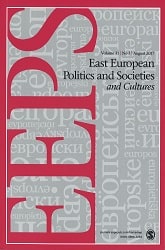1939 versus 1989—A Missed Opportunity to Create a European Lieu de Mémoire?
1939 versus 1989—A Missed Opportunity to Create a European Lieu de Mémoire?
Author(s): Aline SierpSubject(s): Political history, Government/Political systems, Interwar Period (1920 - 1939), Post-War period (1950 - 1989), Sociology of Politics, Politics of History/Memory
Published by: SAGE Publications Ltd
Keywords: Remembrance; 1989; 1939; European Union; Totalitarianism; Memory Politics;
Summary/Abstract: This article analyses the wider context of policy conflict concerning public memory of the 1989 events. It uses Pierre Nora’s concept of lieux de mémoire in trying to explain why 23 August 1939 has been turned into a European Remembrance Day whereas 9 November 1989 has not. By investigating closely the role that various memory actors played during debates at the European level, it advances the idea that the anniversary of the Molotov–Ribbentrop Pact has been more successful in establishing itself within the European remembrance landscape because it has allowed for the promotion of a unifying narrative of the European past. In doing so, the article questions the frequently advanced idea that memory clashes in the EU form around an East–West divide that in some cases overlaps with a Right–Left divide. The analysis digs deep into the complex dynamics lying at the heart of memory contests concerning the end of the Cold War within the EU and provides a more differentiated view of discussions preceding EU decisions on policies of memory.
Journal: East European Politics and Societies
- Issue Year: 31/2017
- Issue No: 03
- Page Range: 439-455
- Page Count: 17
- Language: English
- Content File-PDF

